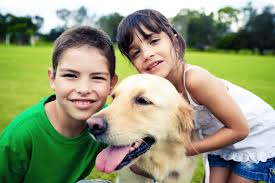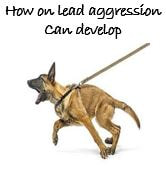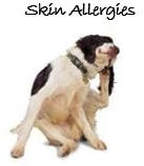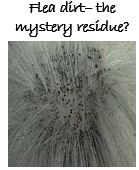DOGS AND CHILDREN
Karen Gray-Kilfoil ANIMAL BEHAVIOURIST
And
Carole O’Leary ANIMAL BEHAVIOURIST
Karen has a B.A. degree in Social Sciences and Humanities, with special emphasis on social, developmental and educational psychology, including one year of biology. She has an Advanced Certificate in Companion Animal Behaviour and a Certificate in Animal Assisted Activities from the Ethology Academy, Pretoria

.Growing up with animals can teach children about tolerance, responsibility, trust and respect. It’s also a great opportunity for parents to teach children the facts of life and death in a safe and controlled environment. Caring for, touching and playing with animals has also been shown to increase self-confidence and good health. Having said that, it’s no use just arriving home with a puppy and hoping for the best. Doing the wrong things (or not doing the right ones) can not only result in a badly behaved or dangerous dog, but can jeopardize a child’s safety or his impression of dogs for the rest of his life. A child that is fearful of dogs is missing out on a worthwhile experience and is often at a social disadvantage. He may be afraid to visit friends or go to parks or beaches where there may be dogs.
Choosing the correct dog (or pet, for that matter) is important and some research and effort should go into this, taking your children into account. Remember that a dog is partly genetics and partly input. A puppy is not a toy and is going to need care, love and training for then next 10 years, at least.
A playmate for your child:
A young child should never be given a puppy or dog as his or her own, except perhaps in name only. Owning a dog is too much responsibility and your child may feel guilty when the dog does something wrong, which is not fair on the child. A dog should be the responsibility of the parents, although children can and should be included in chores such as feeding, walking and "poop scooping". Dogs do not need to be played with for hours every day, so don’t burden your child with this chore. All members of the family should give the dog attention in order to be included in his "pack". Remember a dog is not a replacement playmate for your child and children need to socialise with other children, despite having dogs.
Behaviour Problems:
If you have a very active child then you are likely to have a very active dog, especially if they play roughly together. You need to calm them both down or separate them at times when it gets too much. Reprimanding your child or the dog is unlikely to help, as either of them may see it as a way to get your attention, even if it is negative. Try giving your child attention in a different calm way, while the dog is chewing a toy or bone quietly.
Touching dogs:
Children often touch dogs correctly from an early age, pinching them, but we stop them and teach them to stroke softly. However not all dogs are accustomed to being "pinched", so it is essential to supervise a young child’s contact with dogs at all times. Long strong stroking and firm massaging all over the dog’s body should be taught to children and dogs from an early age.
Punishment:
Be careful of punishing a dog in front of your child. Firstly, it will probably not improve the dog’s behaviour, and secondly, it will teach the child how to behave when he thinks the dog is being naughty. This could be a dangerous habit and could result in a dog bite.
Aggression:
When a dog feels threatened or challenged he has two options, flight or fight. He does not possess language by which to negotiate. This is why attacks occur. Aggression towards children is usually a result of one of four things.
The first is space: Dogs that are given a lot of attention and are carried around and cuddled too much often start to nip because they want space.
Another reason for aggression is fear of children, which can be due to a lack of socialisation (fear of the unknown) or a bad experience around a child. This fear-aggression must be dealt with carefully and should never be punished as this only increases the dog’s fear around children. An animal behaviour consultant can assist in reintroducing children gradually with lots of positive reinforcement.
The third cause of aggression is pain, which may due to many things, for example toothache, skin allergy, backache, arthritis, anal gland blockage or earache. A dog in pain will be more likely to react with aggression when touched, or hurt. If you suspect your dog may be in pain, a veterinarian will be able to assist in sorting out the problem or providing pain relief.
The last reason for aggression is that your dog may be disciplining your child. Toddlers are often seen by older dogs as pups which need reprimanding when they step over the mark. Parents should make it quite clear that they will discipline the child and remove him or her when the dog shows discomfort.
What parents should teach their children about dogs:
Interactions with your own dog:
In the case of pups and young children a parent should supervise all interactions. A dog is nota play toy. With ownership comes the responsibility of caring. If you see that your child is overdoing the "caring" bit, discourage it and distract your child, explaining that the dog doesn’t like being cuddled, carried or whatever all the time.
Teach children to "let sleeping dogs lie".
Teach your child to back off when a dog growls.
Children should be taught never to approach a dog that is eating or chewing, even if it’s something that belongs to the child. An adult should carefully replace the "illegal" object with a "legal" one or a treat.
Bitches with puppies should never be approached.
Children should be discouraged from teasing, chasing and bullying, particularly by waving their hands in dogs’ faces.
Never separate fighting dogs as you or your child may well suffer a severe re-directed bite. Teach your child to move away from a dogfight.
Playing with a dog should be done in such a way that the dog does not get frustrated or over-excited. Teach your child by example and stop playing as soon as your dog shows any aggression. Dogs should not be encouraged to stand or lie on top of children. Older children can be shown how to teach the dog tricks and retrieve toys.
Correct canine communication must be applied and your child should be considered of higher status in the family than your dog. The dog should not feel that he has to correct the child’s behaviour by nipping.
Puppy responsibility can best by guided by attending a puppy school with your child, where everyone is taught the correct way to handle pups. Prevention is far better than cure.
Approaching strange dogs (any dog not of your own home):
Teach children never to approach a strange loose dog.Don’t tease dogs behind gates. One day the gate may be open! If your child wishes to pet a dog that is with its owner, he should ask: "May I touch your dog?", before going towards the dog. If the owner is unsure or says "no" your child should be taught to withdraw immediately.
What to do in the case of an attack:
Keep in mind that most dog attacks are perpetrated by the owner’s or child’s own dog, so this should be taught to every child that has a dog at home. Your child must know how to react correctly in the case of an attack. Instinctive reactions such as shouting, screaming and waving hands will only excite the dog, while triggering the prey drive. The correct reactions may need to be practised so they become habit.
The safest way to behave is to stand still and avoid eye contact. Teach your child to "be a tree" by "planting his roots" (standing still), "folding his branches" (arms) and looking up or down, but away from the dog. Your child can be taught to then sing his favourite song or recite a rhyme, which will prevent screaming and encourage normal breathing. This is the least threatening for the dog and most times the dog will lose interest and back off.
Should the dog not back off at this point or the child is knocked over, the child should "be a hedgehog": drop to the knees and elbows, closely tucking them and the head in under the torso (like a hedgehog) and remain as still and quiet as possible.
Psychological help:
If your child has been bitten by a dog it is not only important to seek medical attention, but also post traumatic counselling, especially if it is a facial wound or was a particularly savage attack. Many an adult is still suffering the consequences of a dog bite in his youth, especially if the dog was his pet.
Animals are part of the world we live in and if a child can learn to live with one successfully perhaps he or she will be a more tolerant and considerate person. Millions of families will testify to the fact that owning a dog is worth it, so enjoy your dog and teach your child to enjoy and respect him too.
Choosing the correct dog (or pet, for that matter) is important and some research and effort should go into this, taking your children into account. Remember that a dog is partly genetics and partly input. A puppy is not a toy and is going to need care, love and training for then next 10 years, at least.
A playmate for your child:
A young child should never be given a puppy or dog as his or her own, except perhaps in name only. Owning a dog is too much responsibility and your child may feel guilty when the dog does something wrong, which is not fair on the child. A dog should be the responsibility of the parents, although children can and should be included in chores such as feeding, walking and "poop scooping". Dogs do not need to be played with for hours every day, so don’t burden your child with this chore. All members of the family should give the dog attention in order to be included in his "pack". Remember a dog is not a replacement playmate for your child and children need to socialise with other children, despite having dogs.
Behaviour Problems:
If you have a very active child then you are likely to have a very active dog, especially if they play roughly together. You need to calm them both down or separate them at times when it gets too much. Reprimanding your child or the dog is unlikely to help, as either of them may see it as a way to get your attention, even if it is negative. Try giving your child attention in a different calm way, while the dog is chewing a toy or bone quietly.
Touching dogs:
Children often touch dogs correctly from an early age, pinching them, but we stop them and teach them to stroke softly. However not all dogs are accustomed to being "pinched", so it is essential to supervise a young child’s contact with dogs at all times. Long strong stroking and firm massaging all over the dog’s body should be taught to children and dogs from an early age.
Punishment:
Be careful of punishing a dog in front of your child. Firstly, it will probably not improve the dog’s behaviour, and secondly, it will teach the child how to behave when he thinks the dog is being naughty. This could be a dangerous habit and could result in a dog bite.
Aggression:
When a dog feels threatened or challenged he has two options, flight or fight. He does not possess language by which to negotiate. This is why attacks occur. Aggression towards children is usually a result of one of four things.
The first is space: Dogs that are given a lot of attention and are carried around and cuddled too much often start to nip because they want space.
Another reason for aggression is fear of children, which can be due to a lack of socialisation (fear of the unknown) or a bad experience around a child. This fear-aggression must be dealt with carefully and should never be punished as this only increases the dog’s fear around children. An animal behaviour consultant can assist in reintroducing children gradually with lots of positive reinforcement.
The third cause of aggression is pain, which may due to many things, for example toothache, skin allergy, backache, arthritis, anal gland blockage or earache. A dog in pain will be more likely to react with aggression when touched, or hurt. If you suspect your dog may be in pain, a veterinarian will be able to assist in sorting out the problem or providing pain relief.
The last reason for aggression is that your dog may be disciplining your child. Toddlers are often seen by older dogs as pups which need reprimanding when they step over the mark. Parents should make it quite clear that they will discipline the child and remove him or her when the dog shows discomfort.
What parents should teach their children about dogs:
Interactions with your own dog:
In the case of pups and young children a parent should supervise all interactions. A dog is nota play toy. With ownership comes the responsibility of caring. If you see that your child is overdoing the "caring" bit, discourage it and distract your child, explaining that the dog doesn’t like being cuddled, carried or whatever all the time.
Teach children to "let sleeping dogs lie".
Teach your child to back off when a dog growls.
Children should be taught never to approach a dog that is eating or chewing, even if it’s something that belongs to the child. An adult should carefully replace the "illegal" object with a "legal" one or a treat.
Bitches with puppies should never be approached.
Children should be discouraged from teasing, chasing and bullying, particularly by waving their hands in dogs’ faces.
Never separate fighting dogs as you or your child may well suffer a severe re-directed bite. Teach your child to move away from a dogfight.
Playing with a dog should be done in such a way that the dog does not get frustrated or over-excited. Teach your child by example and stop playing as soon as your dog shows any aggression. Dogs should not be encouraged to stand or lie on top of children. Older children can be shown how to teach the dog tricks and retrieve toys.
Correct canine communication must be applied and your child should be considered of higher status in the family than your dog. The dog should not feel that he has to correct the child’s behaviour by nipping.
Puppy responsibility can best by guided by attending a puppy school with your child, where everyone is taught the correct way to handle pups. Prevention is far better than cure.
Approaching strange dogs (any dog not of your own home):
Teach children never to approach a strange loose dog.Don’t tease dogs behind gates. One day the gate may be open! If your child wishes to pet a dog that is with its owner, he should ask: "May I touch your dog?", before going towards the dog. If the owner is unsure or says "no" your child should be taught to withdraw immediately.
What to do in the case of an attack:
Keep in mind that most dog attacks are perpetrated by the owner’s or child’s own dog, so this should be taught to every child that has a dog at home. Your child must know how to react correctly in the case of an attack. Instinctive reactions such as shouting, screaming and waving hands will only excite the dog, while triggering the prey drive. The correct reactions may need to be practised so they become habit.
The safest way to behave is to stand still and avoid eye contact. Teach your child to "be a tree" by "planting his roots" (standing still), "folding his branches" (arms) and looking up or down, but away from the dog. Your child can be taught to then sing his favourite song or recite a rhyme, which will prevent screaming and encourage normal breathing. This is the least threatening for the dog and most times the dog will lose interest and back off.
Should the dog not back off at this point or the child is knocked over, the child should "be a hedgehog": drop to the knees and elbows, closely tucking them and the head in under the torso (like a hedgehog) and remain as still and quiet as possible.
Psychological help:
If your child has been bitten by a dog it is not only important to seek medical attention, but also post traumatic counselling, especially if it is a facial wound or was a particularly savage attack. Many an adult is still suffering the consequences of a dog bite in his youth, especially if the dog was his pet.
Animals are part of the world we live in and if a child can learn to live with one successfully perhaps he or she will be a more tolerant and considerate person. Millions of families will testify to the fact that owning a dog is worth it, so enjoy your dog and teach your child to enjoy and respect him too.
|
Handling on-lead aggression
Taking a dog for a walk should be a pleasant experience for both handler and the dog. Unfortunately when aggression is exhibited towards other dogs, the walk ceases to be much fun - get some tips on handling this. |
Skin Allergies
These can range from very mild to extreme. Read what can be contributing factors and how they can be assisted with alternative products. |
What is Flea Dirt?
Flea dirt is the tell-tell sign that your pet has fleas! Yikes! Here is everything you need to know about flea dirt and how to get rid of it. |




